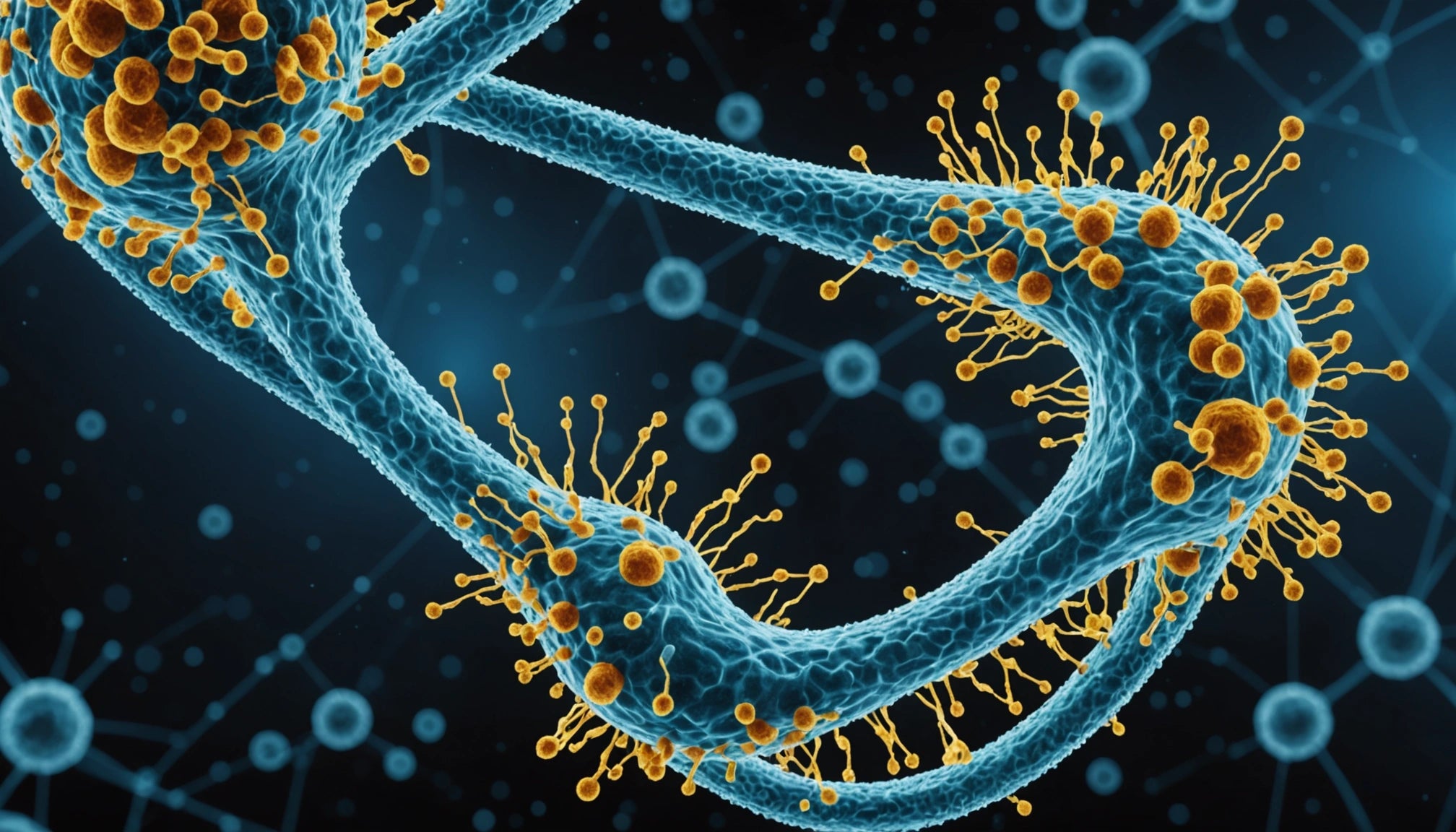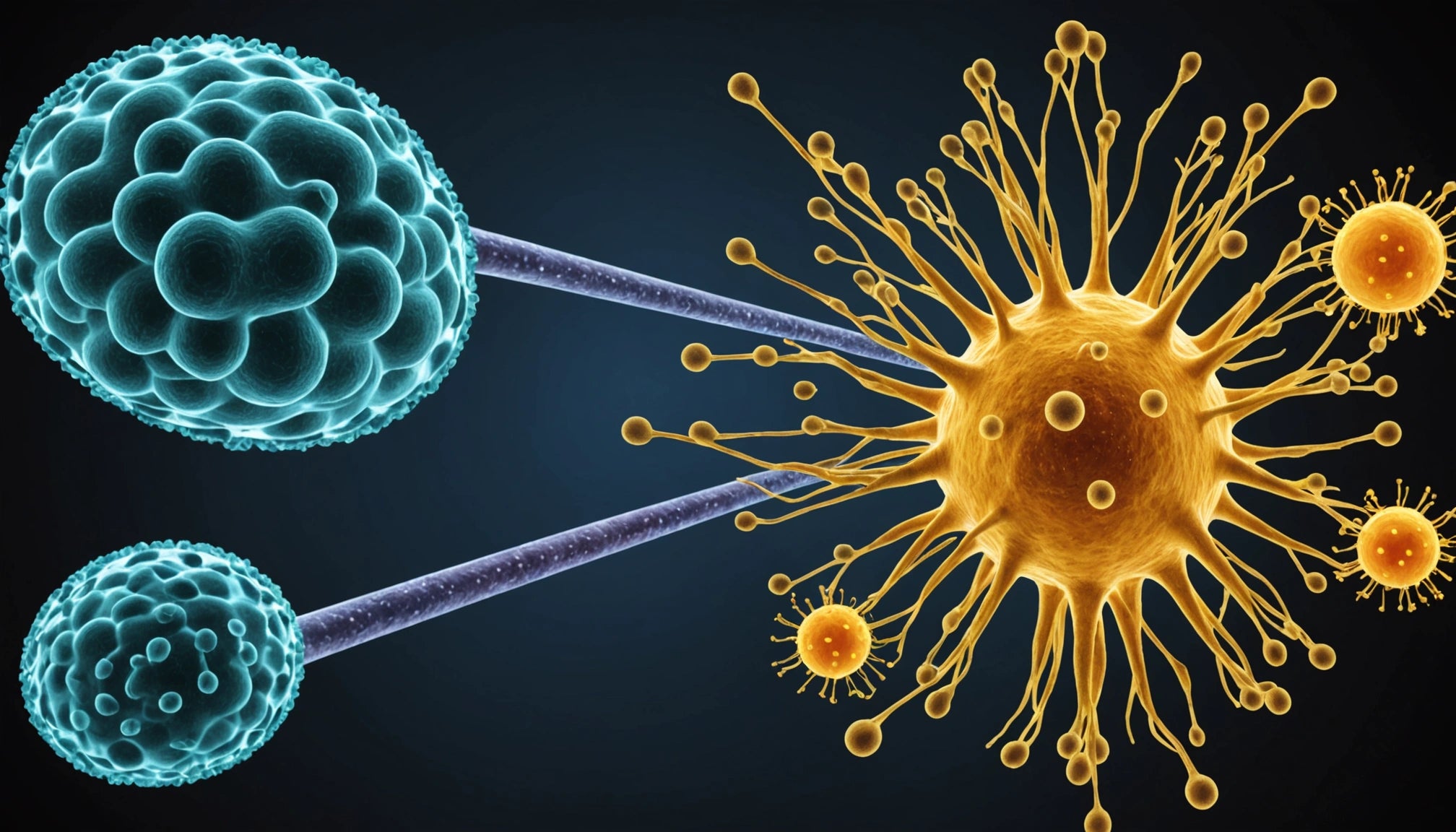
What are exosomes?

Exosomes are small vesicles that play a crucial role in cell-to-cell communication within the body. These tiny structures are secreted by various cell types and contain proteins, lipids, and genetic material such as DNA, RNA, and microRNAs. Exosomes are involved in a wide range of biological functions, including immune response modulation, tissue regeneration, and waste management. They are released from cells into the extracellular space and can travel to distant cells, influencing their behavior and function. Due to their ability to transport biomolecules and participate in intercellular signaling, exosomes have gained significant attention in research for their potential applications in diagnostics, therapeutics, and regenerative medicine. Understanding the mechanisms of exosome release, uptake, and cargo delivery is essential for harnessing their therapeutic potential and advancing our knowledge of cell communication pathways.
Composition of Exosomes
Exosomes, small extracellular vesicles, play a vital role in intercellular communication and are gaining increasing attention for their diverse functions and potential applications in various fields. Understanding the intricate composition of exosomes is crucial for unraveling their biological significance and therapeutic potential.
Lipids: The Foundation of Exosome Structure
Exosomes are enveloped by a lipid bilayer that not only provides structural integrity but also facilitates interactions with target cells. The lipid composition of exosomes is a complex amalgamation of cholesterol, phospholipids, sphingolipids, and ceramides. These lipids not only maintain the integrity of the vesicle but also contribute to signaling pathways and membrane fusion events. The unique lipid profile of exosomes influences their stability and cellular uptake mechanisms.
Proteins: Functional Diversity Within Exosomes
Exosomes are rich in proteins that serve diverse functions crucial for intercellular communication. Among the proteins commonly found in exosomes are tetraspanins, heat shock proteins, membrane transporters, and cytoskeletal proteins. These proteins play essential roles in cargo sorting, vesicle biogenesis, and interaction with recipient cells. The protein composition of exosomes is dynamic and can vary based on the cell of origin and physiological conditions..
Emerging Research and Therapeutic Potential
Recent research has highlighted the potential of exosomes as vehicles for targeted drug delivery, biomarker discovery, and regenerative medicine. By harnessing the unique composition of exosomes, researchers are exploring innovative therapeutic strategies for various diseases, including cancer, neurodegenerative disorders, and inflammatory conditions. Understanding the composition and functional properties of exosomes opens up exciting avenues for the development of novel therapeutics and diagnostic tools.
The composition of exosomes, characterized by their intricate blend of lipids, proteins, and genetic material, underscores their pivotal role in cellular communication and signaling. Further exploration of exosome composition and behavior holds great promise for advancing our understanding of intercellular interactions and developing cutting-edge therapeutic interventions.
The Role of Exosomes in the Body
Exosomes, small extracellular vesicles of endocytic origin, are emerging as pivotal players in various physiological and pathological processes within the body. These tiny vesicles, typically 30-150 nanometers in size, are actively secreted by cells and carry a cargo rich in proteins, lipids, and nucleic acids. Let's delve deeper into the multifaceted role exosomes play in the intricate landscape of the human body.
Cell Communication: Orchestrating a Symphony of Signals
Exosomes serve as potent mediators of cell-to-cell communication, facilitating the transfer of bioactive molecules between neighboring or distant cells. By shuttling genetic material such as microRNAs, mRNAs, and various signaling molecules, exosomes can modulate gene expression, cell behavior, and even phenotypic changes in recipient cells. This intricate exchange of information is integral for coordinating diverse cellular activities, including proliferation, differentiation, and response to environmental cues.
Immune Response Regulation: Fine-Tuning the Body's Defense Mechanisms
In addition to their role in cell signaling, exosomes actively participate in immune regulation, influencing the delicate balance between immune activation and tolerance. These vesicles can carry immunomodulatory molecules that either stimulate or suppress immune responses, depending on the context. For instance, exosomes derived from antigen-presenting cells can educate other immune cells, shaping the overall immune response to antigens. Furthermore, tumor-derived exosomes have been implicated in promoting immune evasion in cancer, highlighting the diverse immunomodulatory functions of these tiny messengers.
Beyond Cell Communication and Immune Modulation: Unraveling Novel Functions
Recent research has unveiled exciting new dimensions of exosome biology, suggesting their involvement in diverse processes such as tissue regeneration, neuronal signaling, and even pathogen defense. Moreover, exosomes have garnered significant interest as potential therapeutic vehicles for delivering drugs, genetic material, or diagnostic markers to specific target cells.
Exploring Therapeutic Potential: Harnessing the Power of Exosomes
The therapeutic potential of exosomes extends beyond their natural roles in cell communication and immune modulation. These vesicles have shown promise in regenerative medicine, where they contribute to tissue repair and wound healing processes. Additionally, exosomes hold great potential in the field of neurology, participating in intercellular communication within the nervous system and offering avenues for treating neurodegenerative disorders.
Future Directions and Challenges in Exosome Research
As scientists continue to unveil the intricate functions of exosomes, several challenges and opportunities lie ahead. Understanding the specific mechanisms underlying exosome-mediated effects, optimizing exosome isolation and characterization techniques, and exploring the safety and efficacy of exosome-based therapies are key areas for future research endeavors.
Exosomes stand as versatile entities that transcend traditional boundaries, acting as conduits of information, regulators of immune responses, and potential agents of therapeutic intervention. The evolving landscape of exosome research holds immense promise for revolutionizing healthcare practices and advancing biomedical discoveries.
Exosomes in Medical Research
Exosomes are small extracellular vesicles that play a crucial role in intercellular communication. Over the years, these tiny vesicles have garnered immense interest in the field of medical research due to their remarkable properties and diverse applications.
The Diagnostic Potential of Exosomes
Exosomes have emerged as promising tools for disease diagnosis. These nanovesicles, released by various cell types, carry a cargo of biomolecules such as proteins, nucleic acids, and lipids. This cargo can act as a reflection of the physiological or pathological state of the parent cell, making exosomes valuable sources of diagnostic information. Researchers are actively investigating the use of exosomes as biomarkers for a wide range of conditions, including cancer, neurodegenerative disorders, infectious diseases, and cardiovascular ailments.
Furthermore, the stability of exosomes in various bodily fluids, such as blood and urine, makes them attractive candidates for non-invasive diagnostic tests. Their ability to shuttle biomolecules across biological barriers further enhances their utility in disease detection and monitoring.
Therapeutic Applications of Exosomes
Beyond their diagnostic potential, exosomes hold immense promise in the realm of therapeutics. These nanovesicles can be harnessed as natural delivery vehicles for therapeutic cargoes, including drugs, RNA molecules, and signaling factors. The lipid bilayer structure of exosomes enables them to protect their cargo from degradation and facilitate targeted delivery to specific cell types or tissues.
Notably, exosomes derived from stem cells exhibit remarkable regenerative and immunomodulatory properties. These stem cell-derived exosomes have shown efficacy in promoting tissue repair, modulating immune responses, and reducing inflammation in various disease models. As a result, researchers are exploring exosome-based therapies for conditions such as tissue injuries, autoimmune disorders, and degenerative diseases.
Future Directions and Challenges
The multifaceted nature of exosomes continues to captivate the scientific community, driving ongoing research efforts to unravel their full potential. However, several challenges must be addressed to fully harness the diagnostic and therapeutic capabilities of exosomes. Standardization of isolation and characterization techniques, scalability of exosome production, and ensuring safety and efficacy in clinical applications are among the key hurdles that researchers are actively working to overcome.
Exosomes represent a fascinating frontier in medical research, offering a wealth of possibilities for revolutionizing disease diagnosis, treatment, and monitoring. As our understanding of exosome biology deepens and technology advances, the future holds exciting prospects for leveraging these tiny vesicles to enhance human health and well-being.
Conclusion
Exosomes are small extracellular vesicles that play a crucial role in cell-to-cell communication and are being increasingly recognized for their potential in various fields, including medicine, diagnostics, and therapeutics. As research on exosomes continues to expand, their diverse functions and applications are expected to unlock new possibilities for understanding and treating a wide range of diseases and conditions.



Leave a comment
This site is protected by hCaptcha and the hCaptcha Privacy Policy and Terms of Service apply.